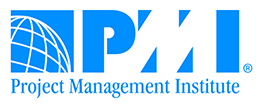The PMO – What’s In It For You
I was recently asked to do a talk on the Project Management Office (PMO) and how it is “here to help you but not do your job.” As part of that, I spoke on the state of the PMO (based on studies) and where it is going in the future.
Before we talk about who the “you” is here, let’s talk about some statistics. According to a study done by PM Solutions, in 2016, 85% of companies had a PMO. (Reading between the lines, not all of these PMO’s can be considered “best in class.”)
Some of the perceived benefits were:
• 33% improvement in projects delivered under budget
• 27% improvement in customer satisfaction
• 43% improvement in alignment with company objectives
• 25% decreased in failed projects
• $175k USD cost savings per project
The majority of these PMO’s participate in strategic planning with an equivalent number involved in portfolio management.
That same study talked about the top five priorities of PMOs over the next twelve months. The results are instructive:
• Implement/enhance governance process – 58%
• Implement resource planning and forecasting process – 56%
• Implement/enhance core PM processes – 54%
• Implement/enhance reporting, analytics, dashboard tools – 51%
• Implement/enhance portfolio process – 49%
All of this sounds great but – to me anyway – there is one glaring omission – Agile. Agile is not replacing waterfall nor is everybody doing it. But with its continued popularity and its inclusion in a significant way in the upcoming PMBOK (Q3 2017), this puzzles me.
If I were running a PMO I would – at the very least – be thinking of exploring Agile and running a pilot. (One hundred percent of best-in-class PMO’s utilize it in some fashion.) I make this statement of perceived lack of Agile interest in some quarters not only from the study but from anecdotal observation.
What types of services are PMO’s providing? Again, instructive and mostly (if not entirely) what you’d expect:
• Developing and managing project policies, procedures, templates, and other shared documentation.
• Monitoring compliance with PM standards, policies, procedures, and templates by means of audits
• Managing of project managers
• Executive Management advice
• Resource utilization/allocation
• Enterprise Risk Management
• Implementation of PM software
• Project manager performance evaluation and assessments
• Strategic ROI validation
• PMO Performance monitoring
• Define PM competency
• Provide PM training
• Agile coaching and assistance in waterfall-to-Agile transformations.
So, what’s in it for you? Well, it depends on who “you” are. The PMO is a servant with many masters.
–Project managers will get a consistent set of processes, templates, training, coaching, and possibly even a defined career path. (Best-in-class PMOs provide almost 3 times as much training per year as others.)
–Functional managers will get consistent project managers (and results) from project to project along with (if required) Agile coaching
–Senior management will get portfolio management, projects that meet strategic objectives, performance reporting, ROI measurement and assistance in Agile transformation.
Did I forget anyone? Oh, yeah. The customer. They will get satisfaction. Without that, the rest of it doesn’t make a damn bit of difference.
Send me a note at jstewart@jpstewartassociates.com to be added to my monthly newsletter.


Comments are closed.